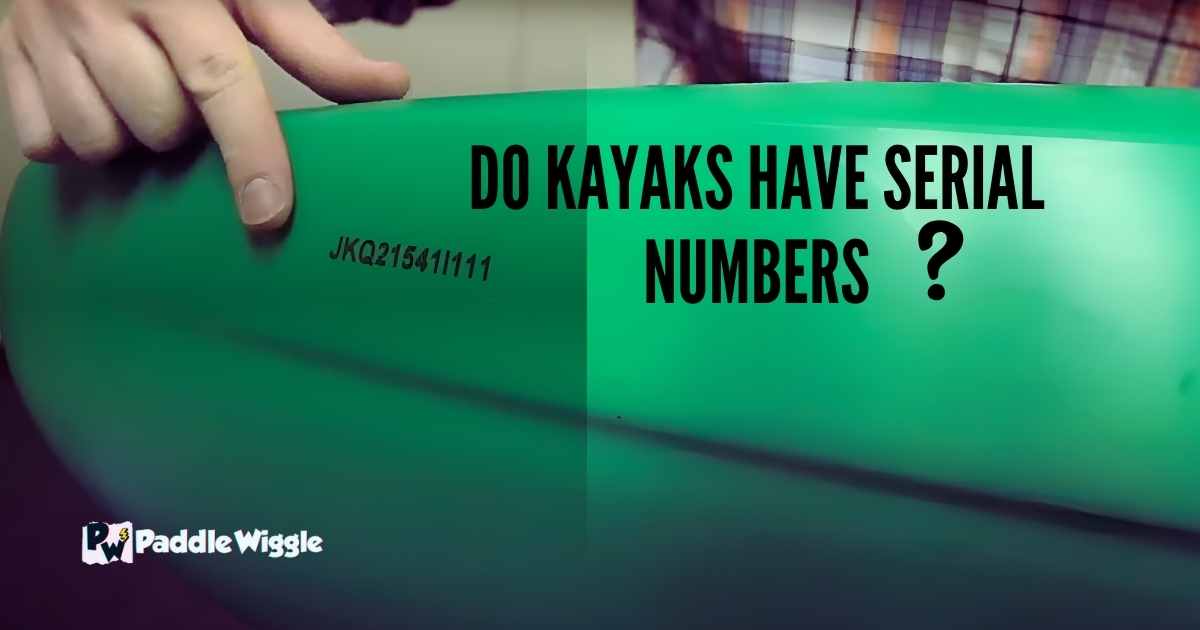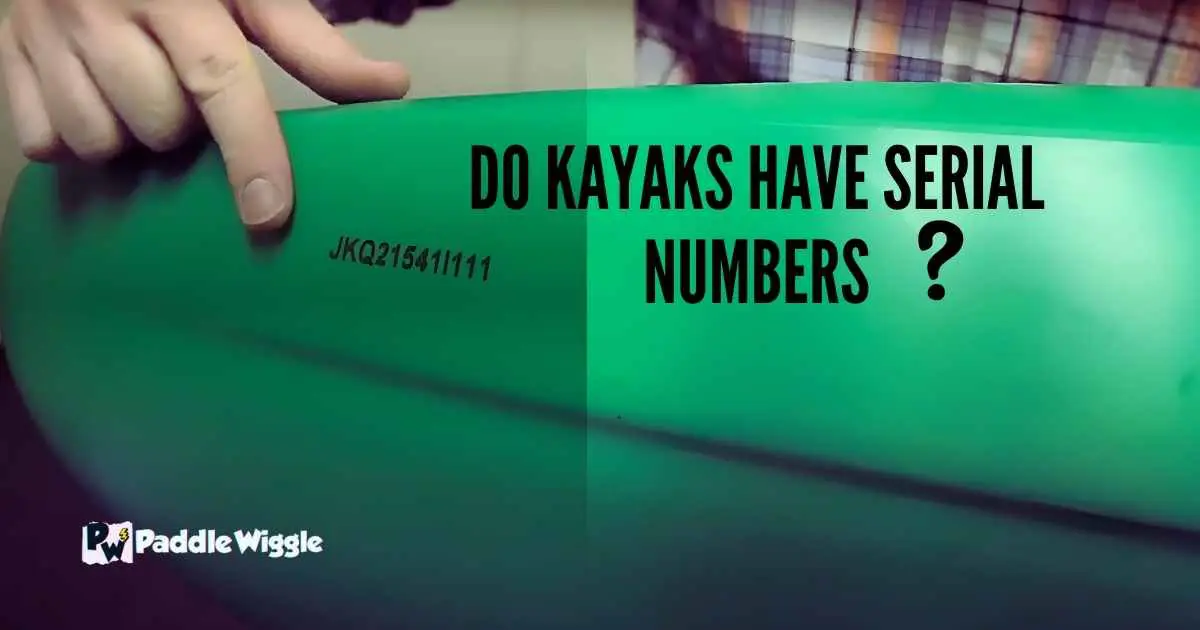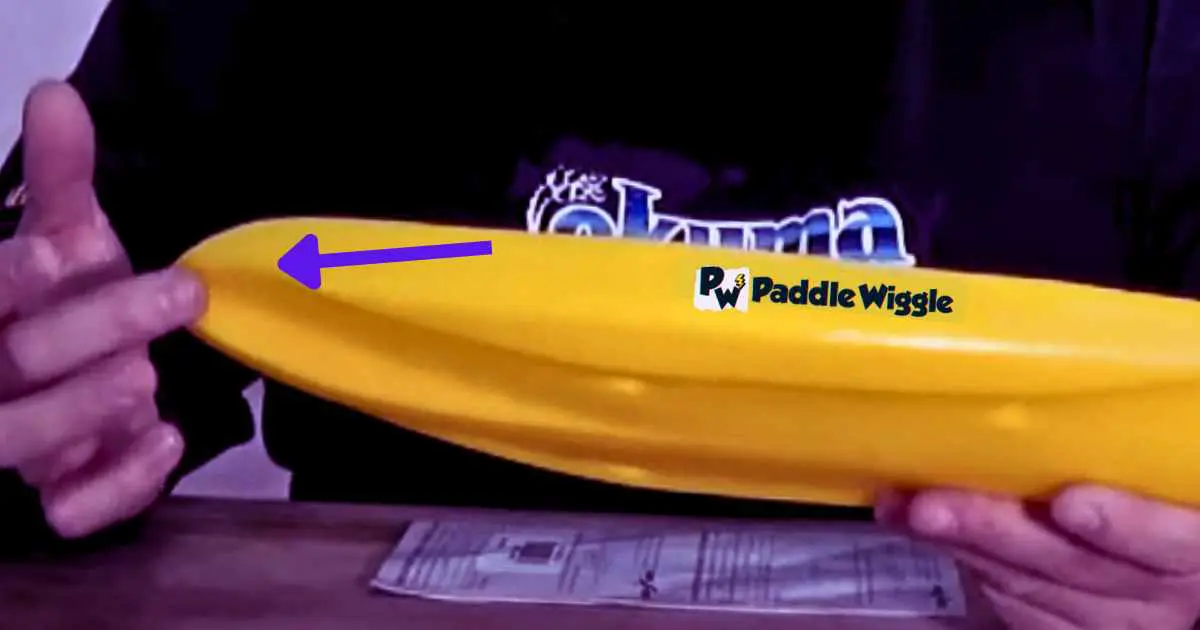Kayaking is all about the water, the paddle, and the thrill of the adventure. But did you know a tiny yet important detail is hidden on every kayak – the serial number? You might be wondering, do kayaks even have serial numbers? And if so, why do they matter? Well, the answer is yes; many kayaks do have serial numbers.
These numbers are like a kayak’s fingerprint, making each one unique. They serve various purposes, from tracking manufacturing details, helping recover stolen kayaks, and even assisting with warranty claims. Finding the serial number on your kayak might seem like a puzzle, as it can be in different places depending on the kayak’s make and model. Typically, you’ll find it on the back of the kayak near the rudder or inside the cockpit rim.
Whether you want to register your kayak or satisfy your curiosity about its origins, knowing whether it has a serial number is essential. In this guide, we’ll explore the world of kayak serial numbers, their importance, and where to find them. Let’s get started!
Contents


Understanding The Purpose Of Kayak Serial Numbers
Serial numbers on kayaks serve multiple important purposes. Serial numbers aren’t just random numbers made up by companies. They actually have an important job. They help track how things are made, give information about warranties, and ensure things are made well. Let’s delve into why kayak serial numbers are essential.
Tracking Manufacturing Details And Warranty Information
One important job of kayak serial numbers is to keep tabs on how kayaks are made and what kind of warranty they have. When they make a kayak, they give it a special serial number that no other kayak has. This helps the makers remember stuff like what materials they used when they made it and any special things they did to it.
Having this detailed information helps both manufacturers and customers in several ways:
- Manufacturers can identify any potential issues or defects with specific models by referencing their serial numbers. This enables them to take necessary actions such as issuing recalls or providing repairs under warranty.
- Customers can easily register their kayaks for warranty purposes using the serial number. In case they encounter any problems or need assistance, manufacturers can quickly access relevant information about the kayak and provide appropriate support.
Identifying Specific Models, Features, And Production Dates


Kayak serial numbers are also important because they tell you exactly which model it is, what it comes with, and when it was made. The letters and numbers in the serial number give you this useful information.
For instance:
- Certain letters or codes embedded within the serial number may indicate the model series or type of kayak.
- Additional characters could represent specific features or options available for that particular model.
- The sequence of numbers might reveal the production date or year when the kayak was manufactured.
By decoding these elements within a serial number, manufacturers and customers can better understand the exact specifications and characteristics associated with a particular kayak model.
Tracing Quality Or Safety Issues
Serial numbers are like special codes that help keep track of kayaks. If something is wrong with a kayak, like it’s not made well or it’s not safe, the company can use these codes to figure out which group of kayaks has the problem or when they were made. This allows them to take swift action to rectify the problem and ensure customer safety.
When companies connect serial numbers to how they make things, they can keep an eye on their products from start to finish. This way, they can ensure their stuff is made well and quickly deal with any problems.
Locating The Serial Number On A Kayak
If you’re wondering how to find the serial number on your kayak, you’ve come to the right place. The serial number is like an important code that tells you about your kayak. It says who made it, when, and other important stuff about it. Let’s dive into the different ways you can locate the serial number on your kayak.
On The Stern Or Rear End
The most common location for kayak serial numbers is on the stern or rear end of the boat. Take a look at the back of your kayak, specifically near the rudder or skeg, if you have one. Look for a series of letters and numbers engraved or printed onto the surface. This combination of characters represents your unique kayak serial number.
Under The Seat Or Inside Hatches
If you can’t find the serial number on the stern, don’t worry! Some manufacturers may choose to place it in alternative locations. Check under your seat by lifting it up or inside any hatches present on your kayak. Manufacturers often hide these identification numbers in inconspicuous areas for security purposes.
Near The Cockpit Area
In some cases, manufacturers may also engrave or print the serial number near the cockpit area of your kayak. The cockpit refers to where you sit while paddling. Please take a close look around this section, particularly along its edges or sides. You might find a small plate with relevant information about your kayak’s manufacture date and time.
It’s important to note that different manufacturers may have their own preferences. While these are some common locations, there could be variations depending on each manufacturer’s design choices.
Now that we know where to look for our kayak’s serial number let’s summarize:
- The most common location for a kayak’s serial number is on its stern or rear end.
- If it’s not there, check under the seat or inside hatches.
- Some manufacturers may also engrave the serial number near the cockpit area.
Remember, your kayak’s serial number is really important. You might need it for things like getting your warranty, registering your kayak with the authorities, or finding your kayak if it gets stolen. Keep this number safe and easy to find.
Engraved Vs. Hand-Etched Hull Identification Numbers
Hull identification numbers (HINs) are like special codes on your kayak. They’re either made when the kayak is built with a machine or by hand. The ones made with a machine are permanent and tell you important stuff about the kayak, like where it’s from and what it’s like.
The ones made by hand are used by smaller kayak builders or for custom designs. They’re also unique codes, but they’re etched onto the kayak manually, not by a machine in the factory.
Appearance And Durability
The big difference between engraved and hand-etched HINs is how they look and how long they last. Engraved ones look more professional because they’re made with special tools when the kayak is built. The letters are deeper and neater on the hull, which makes them easier to read.
Hand-etched HINs can look different depending on the person doing it. Since it’s done by hand, the depth, size, and how easy they are to read can vary. But some people like this because it makes their kayak special.
When it comes to how long they last, engraved HINs are better. They’re part of the kayak itself and don’t fade or get damaged easily, even if they’re often in water or the sun.
Hand-etched HINs might only last for a short time because they rely on manual etching, and if it needs to be done right or the kayak goes through tough conditions, like lots of saltwater or rough handling, the markings can become hard to see over time
To summarize:
Engraved HINs:
- Professional appearance
- Clear and easy to read
- Long-lasting and durable
Hand-Etched HINs:
- Personalized touch
- Unique appearance
- It may vary in legibility and durability
While engraved HINs offer a more standardized and durable option, hand-etched HINs provide a personalized touch that some kayakers prefer. It ultimately comes down to personal preference and the intended use of the kayak.
The Significance Of Hull Identification Numbers
Hull Identification Numbers (HINs) play a crucial role in the world of kayaks. These unique numbers provide important information about a kayak’s manufacturer, model, and certification standards. In fact, they are required by law for all recreational vessels, including kayaks.
One key reason why HINs are so important is that they aid in tracking stolen kayaks. Just like how fingerprints help identify individuals, HINs help identify specific kayaks. If a kayak is stolen and the owner reports it to the authorities, the HIN can be used to track down the stolen vessel. This helps increase the chances of recovering stolen property and holding thieves accountable for their actions.
Hull identification numbers (HINs) are really important for recalls. Sometimes, the people who make kayaks find problems with some models that could be dangerous. If they have HINs, they can quickly find the people who own these kayaks and tell them about recalls or fixes. This way, kayakers can have fun without worrying about any safety issues.
Hull identification numbers (HINs) are important for keeping kayaks safe. They tell you about how the kayak is made and if it follows safety rules. For example, with the HIN, you can check if your kayak meets safety standards from groups like the American Boat and Yacht Council (ABYC). This helps you make smart choices when buying a kayak to make sure it’s safe and dependable.
Here’s what to look for in the HIN: The first three letters are the manufacturer code (MIC), which tells you who made the kayak. After that, there are more letters and numbers that tell you stuff like the model or serial number of the kayak.
Final Words
In summary, kayaking is all about the water and the adventure, but your kayak has a secret: the kayak’s serial number. These numbers play important roles, like tracking how the kayak was made, aiding in recovering stolen kayaks, and making warranty claims. You’ll typically find the serial number near the back or inside the cockpit rim, but its importance goes far beyond its hidden location.



